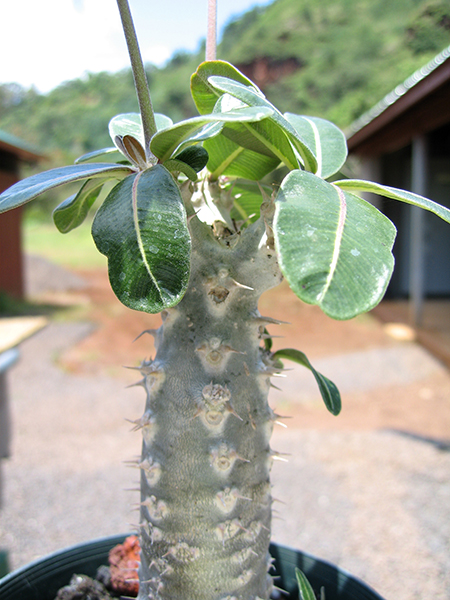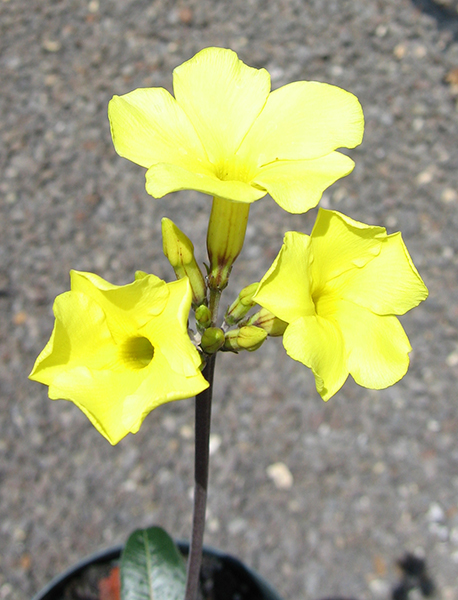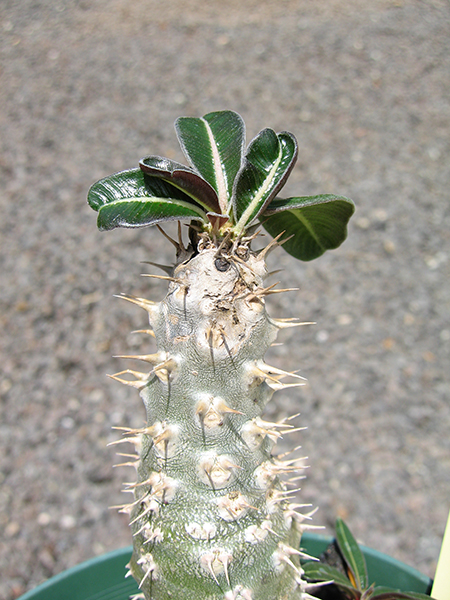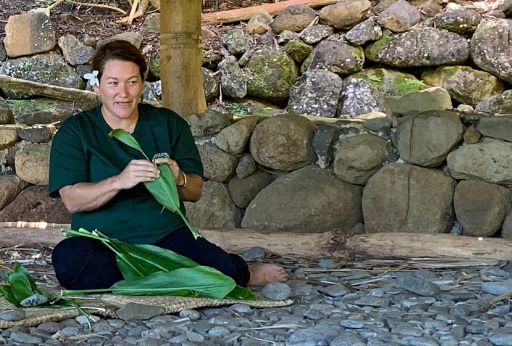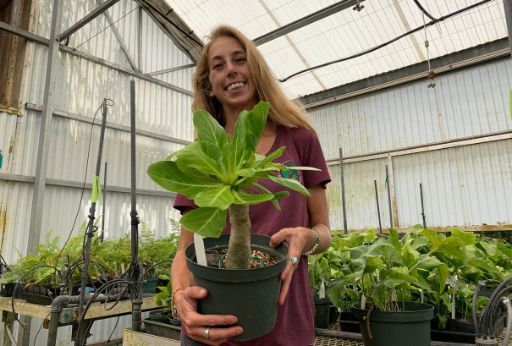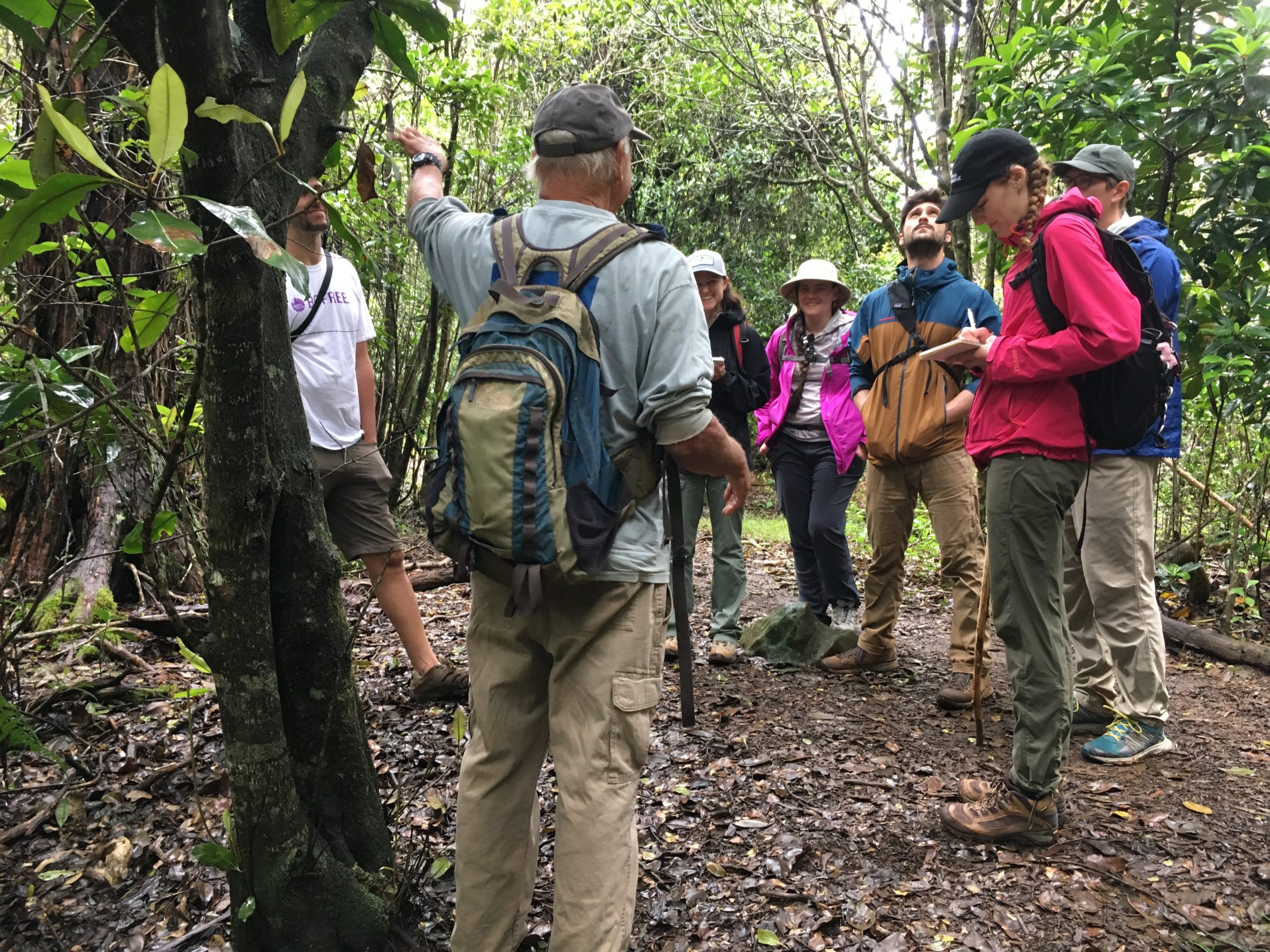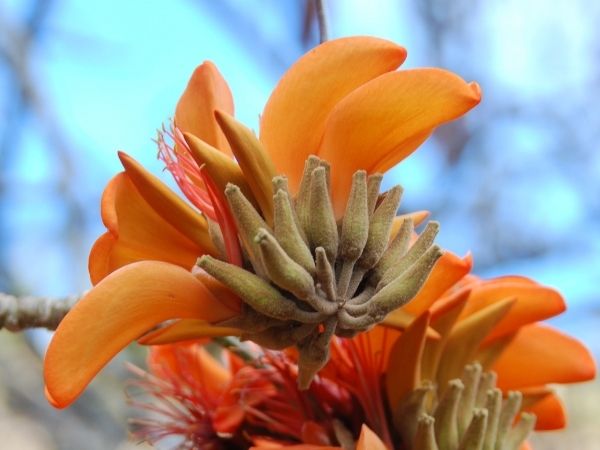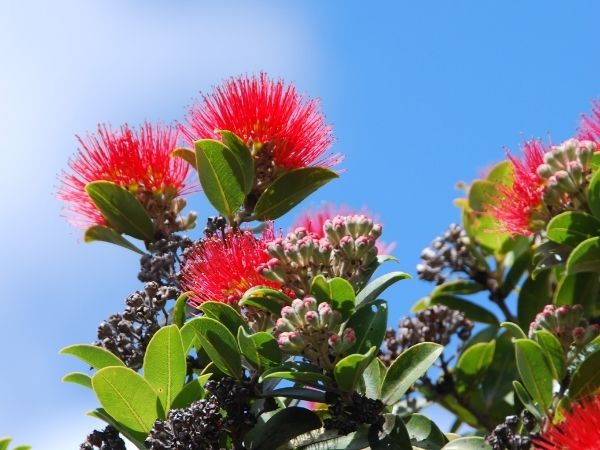Tropical Plant Database - Plant Details
Pachypodium rosulatum var. gracilius
Click on any heading above to view more information about this plant
Conservation Status
- IUCN: Not Evaluated
- USFWS: None
Family: APOCYNACEAE
Genus: Pachypodium
Species: rosulatum
Species Author: Baker
Variety: gracilius
Variety Author: (H. Perrier) Lüthy
Genus: Pachypodium
Species: rosulatum
Species Author: Baker
Variety: gracilius
Variety Author: (H. Perrier) Lüthy
Pachypodium rosulatum var. gracilius is a succulent plant with a columnar trunk that differs from the variety rosulatum by its more robust and unusual rounded shape (like a soccer ball) and less branched body. The silvery-gray bloated base is smaller than other varieties and with slimmer branches that are loosing the thinner spines early. The foliage is also smaller, narrower, lanceolate, semi-persistent and shining. The leaves clustered together at the top of the trunk. The flowers have a tubular corolla made of 5 yellow petals and are scented. The flowers appear only on the adult plants. This is one of the most beautiful blooming succulents.
(Watson, L., and Dallwitz, M. J. 1992. 1999. The Families of Flowering Plants: Descriptions, Illustrations, Identification, and Information Retrieval.)
(Rapanarivo, S.H.J.V; Lavranos, J.J.; Leeuwenberg, A.J.M.; and Röösli, W. 1999. Pachypodium (Apocynaceae): Taxonomy, Habitats and Cultivation.)
(Watson, L., and Dallwitz, M. J. 1992. 1999. The Families of Flowering Plants: Descriptions, Illustrations, Identification, and Information Retrieval.)
(Rapanarivo, S.H.J.V; Lavranos, J.J.; Leeuwenberg, A.J.M.; and Röösli, W. 1999. Pachypodium (Apocynaceae): Taxonomy, Habitats and Cultivation.)
True to their name Pachypodium, which means "thick foot," these prickly plants survive hot, dry climates by storing water in their thick, tuberous trunks. With this adaptation, many Pachypodium species can survive temperatures of over 150° F.
(Rapanarivo, S.H.J.V; Lavranos, J.J.; Leeuwenberg, A.J.M.; and Röösli, W. 1999. Pachypodium (Apocynaceae): Taxonomy, Habitats and Cultivation.)
(Rapanarivo, S.H.J.V; Lavranos, J.J.; Leeuwenberg, A.J.M.; and Röösli, W. 1999. Pachypodium (Apocynaceae): Taxonomy, Habitats and Cultivation.)
Rapanarive is endemic to Madagascar. It occurs only in the Isalo Mountains, although in a fairly large area.
(Watson, L., and Dallwitz, M. J. 1992. 1999. The Families of Flowering Plants: Descriptions, Illustrations, Identification, and Information Retrieval.)
(Rapanarivo, S.H.J.V; Lavranos, J.J.; Leeuwenberg, A.J.M.; and Röösli, W. 1999. Pachypodium (Apocynaceae): Taxonomy, Habitats and Cultivation.)
(Watson, L., and Dallwitz, M. J. 1992. 1999. The Families of Flowering Plants: Descriptions, Illustrations, Identification, and Information Retrieval.)
(Rapanarivo, S.H.J.V; Lavranos, J.J.; Leeuwenberg, A.J.M.; and Röösli, W. 1999. Pachypodium (Apocynaceae): Taxonomy, Habitats and Cultivation.)
Pachypodium rosulatum var. gracilius was described by the French botanist H. Perriér de la Bathie in 1934. The name of this beautiful succulent comes from the Greek word “pachus” meaning thick and from the Latin word “podos”, which means foot.
(Rapanarivo, S.H.J.V; Lavranos, J.J.; Leeuwenberg, A.J.M.; and Röösli, W. 1999. Pachypodium (Apocynaceae): Taxonomy, Habitats and Cultivation.)
(Rapanarivo, S.H.J.V; Lavranos, J.J.; Leeuwenberg, A.J.M.; and Röösli, W. 1999. Pachypodium (Apocynaceae): Taxonomy, Habitats and Cultivation.)
This species is rare in collections and it is endangered in the wild.
.svg)

